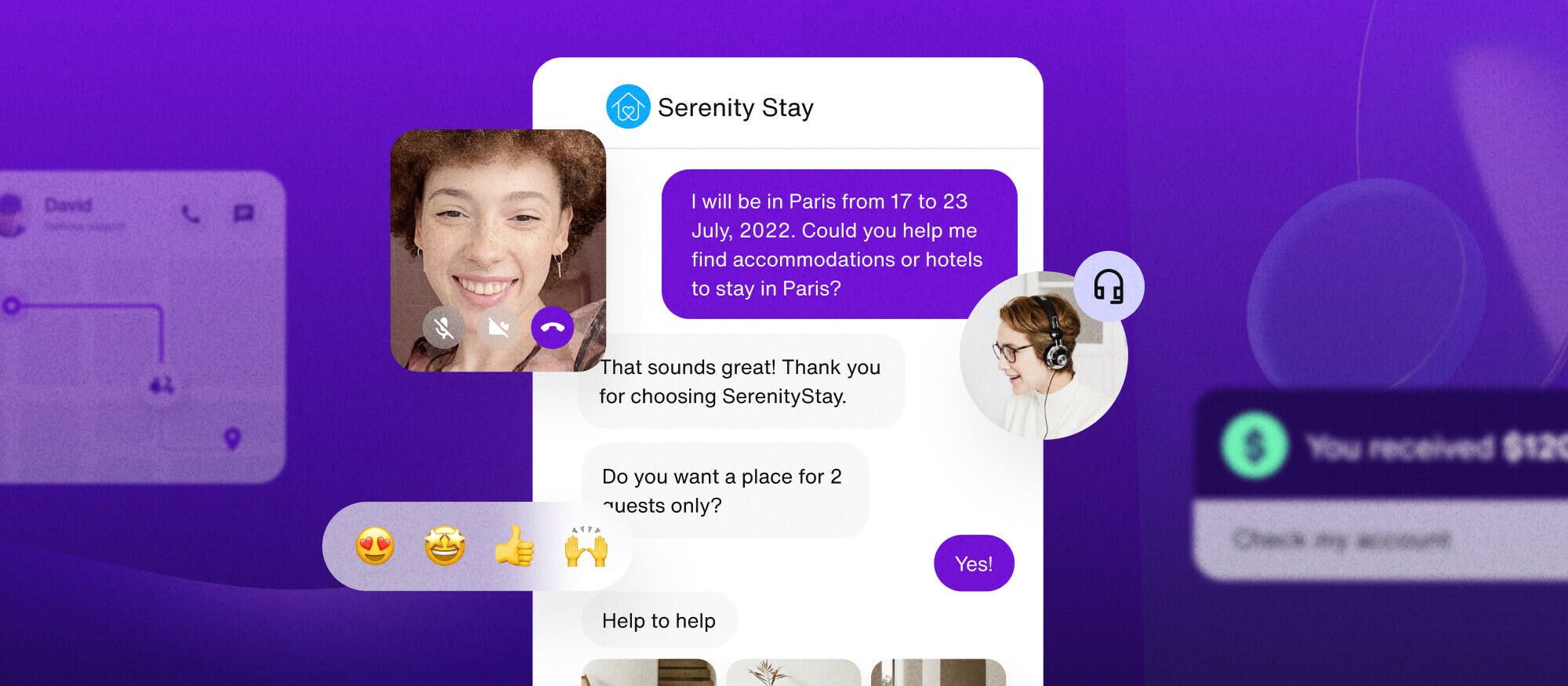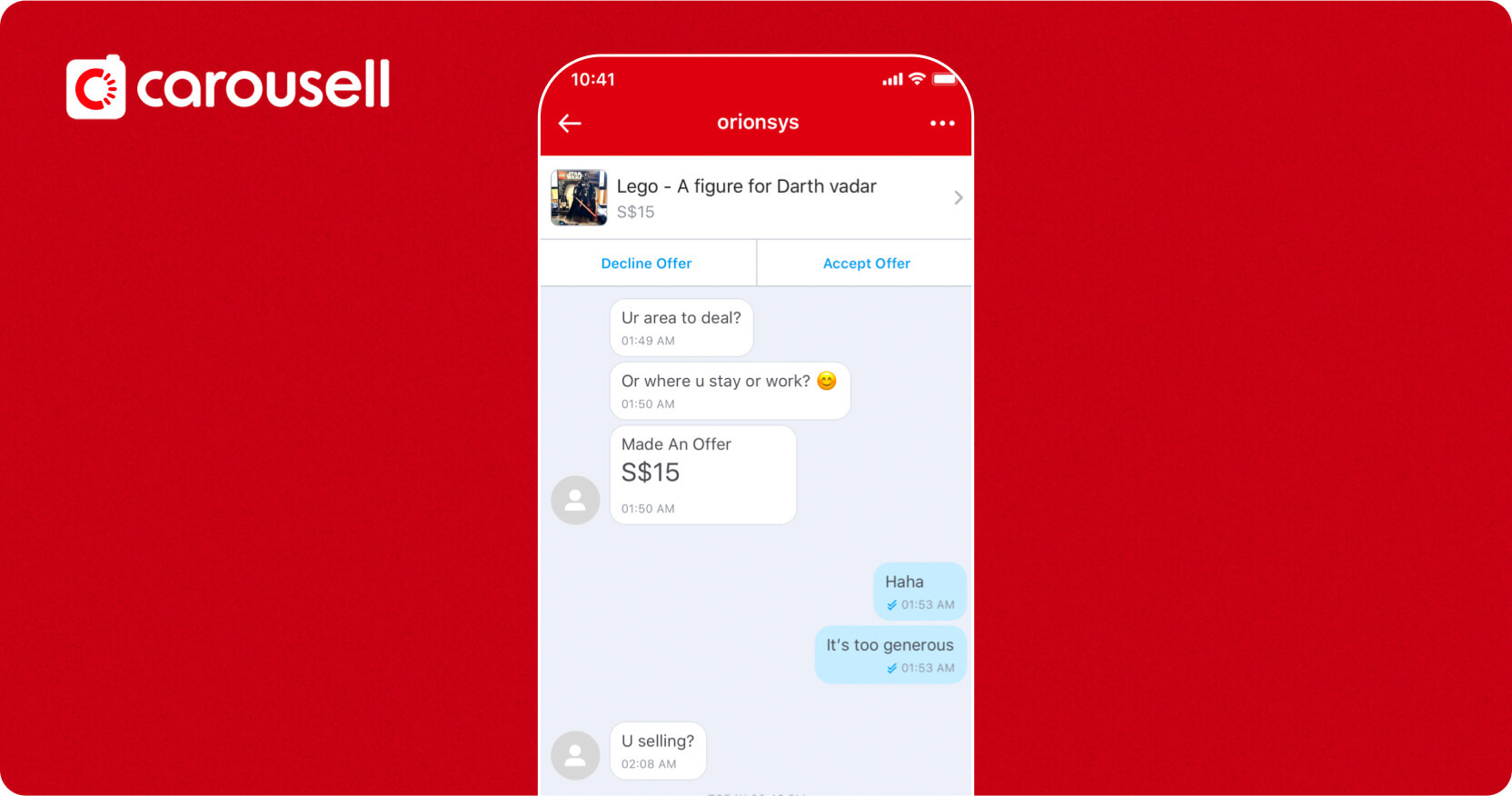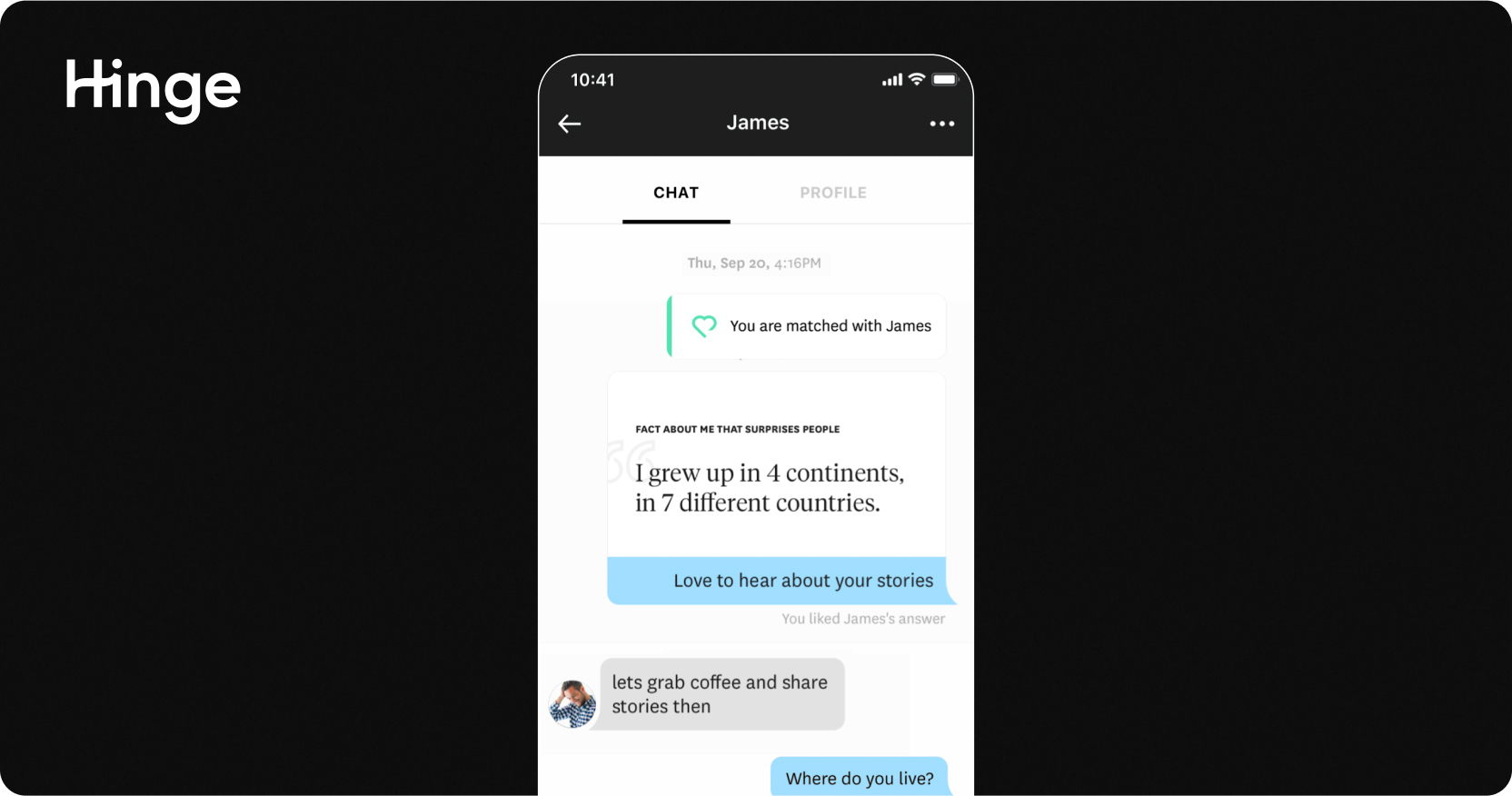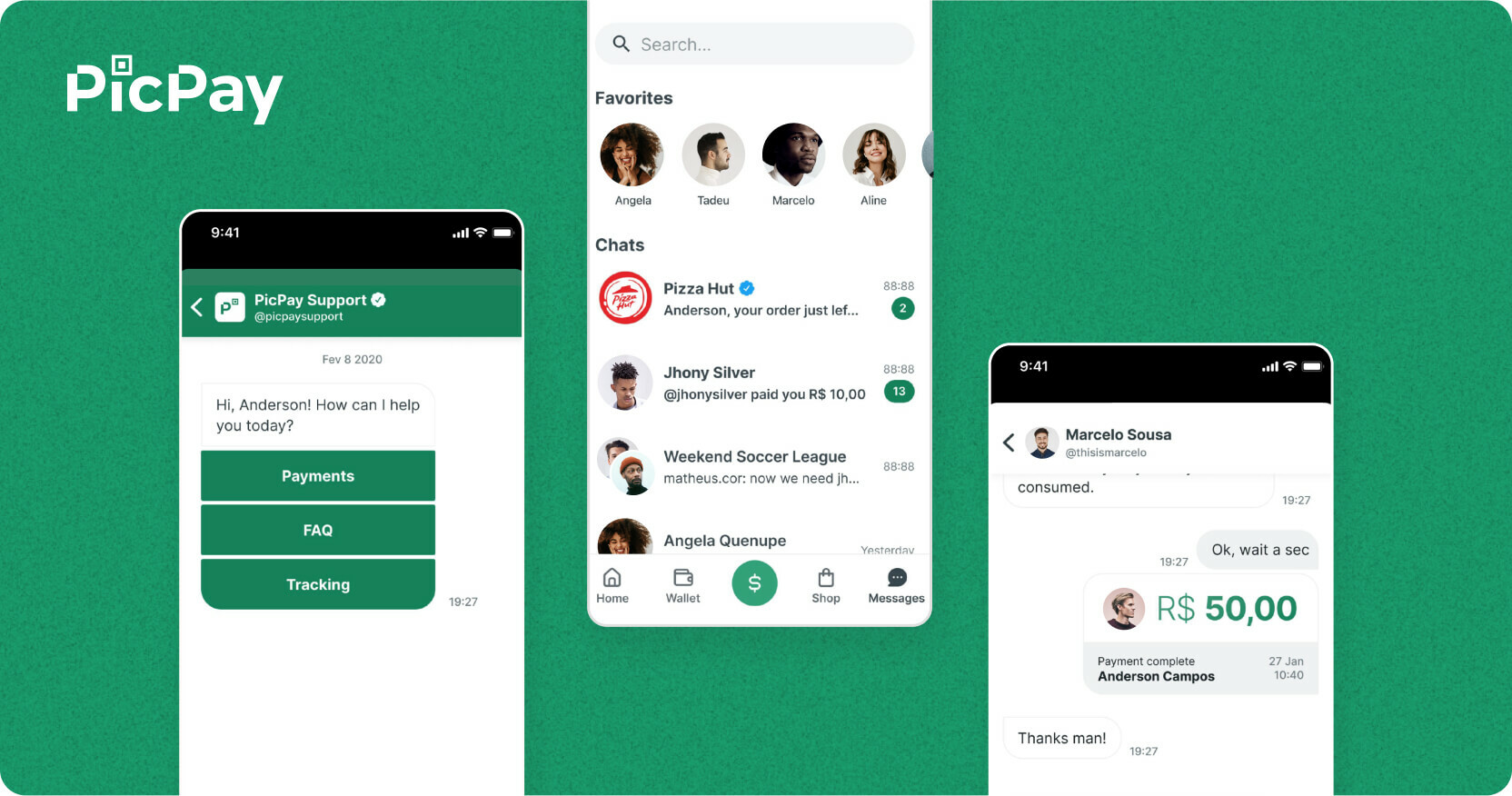In-app messaging: A catalyst for engagement, conversion, & retention

If you need driving directions, would you rather have them on a heads-up display next to your steering wheel or on your phone inside the glovebox?
It’s a rhetorical question, but the point is:
Helpful advice (or direction) is far more useful if you have access to it while doing the task.
This is the value of in-app messaging — it provides app users with helpful tips, relevant content, and context right when needed.
In this post, we will cover the basics of in-app messaging, provide some examples, and show you the in-app messaging tools and building blocks you need to put together a rock-solid in-app communication strategy.
Let’s get to it!
What is in-app messaging?
In-app messaging is a fully owned, branded communication type that sends messages to customers while they are in-app.
At Sendbird, we offer products that help superpower in-app chat or messaging, such as Notifications, Unified Inbox, Desk, Calls, and more.
In-app messaging differs from SMS, MMS, email, and push notifications. All have limitations in terms of design and availability. The design of push notifications is limited to iOS and Android systems. SMS, of course, has extremely basic, text-only design options that leave little room for creativity (in terms of formatting) and come with hidden costs. MMS also comes with extra fees, no control over data, and lower user engagement.
Additionally, new users must opt-in to both communication styles. They can simply decline access for you to send both push and SMS messages if they have a poor user experience. And if they do opt out, it’s highly unlikely that they will ever turn them back on. Email, of course, carries the same downsides.
These types of communication are typically designed to draw users back into the app, while in-app messages exist to help users get more value out of the app during their sessions.
Now let’s break down the intended outcomes of in-app messaging from both the user and product perspectives.
What in-app messaging should do
In-app messages should guide users to take action that provides value. This is commonly referred to as the “Aha moment,” which is a pivotal moment for the customer as they discover just how your product is going to help them.
And it cannot be stressed enough how important it is to encourage users to find their aha moment as quickly as possible — after all, most apps lose 77% of their daily active users within three days after installation.
From the development side, in-app messages should drive users toward significant conversions such as a free trial or freemium upgrades, decreasing time to value, crossing session milestones, etc.
Some common use cases where you’ll see the use of in-app messages include:
User onboarding process and first-time user tutorials
Monetization and freemium upsells
Reward, badge, and other gamification notifications
App development updates and new features
Product tours and walkthroughs
When used correctly, in-app messages have the power to help your app retain users not only during that crucial 1-3 day window, but long after to create a truly sticky experience. Speaking of using in-app messages correctly…
Examples of in-app messaging in action
Here are some practical examples of different types of in-app messages (from chat reactions to full-screen takeovers) and how they guide users toward finding value in your product and create a better app experience.
Customer marketplace example

Online marketplaces have a single, primary goal: Convert shoppers into buyers. To this end, product managers have many tools to increase conversion, but when customer service is paramount, in-app messages offer a personal and timely way to encourage a sale.
For example, peer-to-peer marketplace Carousell uses Sendbird for in-app messaging services for its over 144 million listings. By using our suite of tools they were able to use in-app messages to create more human connections across their product while also reducing their engineering workload. With Sendbird, Carousell increased their monthly message count by more than 150% while boosting revenue and conversions across 45 million buyers and sellers.
Dating app example

When you meet somebody new on a dating app, which is your preferred contact method? Chat, audio, or video? Hinge chose to offer all three to appeal to each segment of its user base.
In just five weeks, the development team at Hinge was able to use the Sendbird API to implement a suite of messaging options in their now massively popular app. At its peak, Sendbird enabled secure and media-encrypted 1:1 voice and video chat, and reliable call quality for millions of connections.
In addition to their intuitive app UI, the Hinge team used in-app communication like pop-ups to guide users toward these messaging options so they could find the best way to connect with their potential dates.
Read the entire case study from Hinge.
Fintech example

When dealing with other people’s money, trust is paramount. PicPay, Brazil’s largest digital wallet with more than 60 million users, needed an in-app messaging strategy that would instill trust in the customer experience.
PicPay used the Sendbird API to configure in-app messages that provided added context to user actions during transactions. This ensures users are confident that they are sending money to the correct person and have less hesitation in doing so.
Additionally, PicPay used in-app notifications to allow users to instantly provide user feedback during their customer support chats, providing an extra level of service and security.
PicPay increased chat-based transactions by 200% using Sendbird.
The building blocks of in-app messaging
Now that you’ve seen some messaging examples from the real world, the benefits of in-app messaging, and their effect on user behavior, let’s talk about how to bring your communication strategy to life. To do that, you’ll need an in-app messaging platform with the following building blocks.
Chat
In a technology-driven world, your users need the ability to chat with support and sales teams if you want to give your product a chance to compete in a crowded marketplace.
If a person has to exit your app to fill out a form online, text a support line, or make a phone call, you will significantly decrease your user retention rate. According to the customer support platform Kayako, 79% of businesses that offer live chat said it had a positive effect on sales, revenue, and customer loyalty.
If you’re building out or making improvements to your app, consider baking live chat into your product from the beginning.
Notifications
As we’ve discussed, users often need that extra nudge to help them achieve the most value from your product. Notifications are an absolute must-have for increasing customer engagement and meaningful conversions, and if you can execute them with style, all the better.
In-app messaging platforms like Sendbird allow you to customize the design, type and triggering of your notifications for pinpoint timing and delightful UI. Bonus — track engagement and conversions with your notifications with an analytics dashboard so you can fine-tune your marketing strategy over time.
Unified inbox
Customer support messages, order updates, promotional deals, user-to-user chat – the applications for in-app messaging go on and on. While these messages may originate from different departments in your company (sales, marketing, operations, etc.), the customer doesn’t know that, and they certainly don’t want to go digging around in their messages to find what they’re looking for.
By using a unified inbox you can consolidate all messaging in one easy-to-find location. This often-overlooked aspect of in-app messaging can be a difference maker in terms of customer satisfaction, but also cutting down the time to resolution for your support teams.
Calls
Typically we think of in-app messages being text-based, but there are great opportunities to make audio and video messaging a part of your strategy, too.
In an increasingly globalized world, apps must be able to deliver voice and video chat options that function internationally with a smooth delivery and no lag. Learn more about your options for building audio and video into your mobile application here.
Support
If you have a high volume of customer support tickets or just want to provide the best CX possible, a specialized support inbox for your app is a game changer. A specialized inbox for support can not only enhance the customer experience, but it can also increase the productivity of your agents.
In-app customer support can:
Automatically provide answers to FAQs
Route, assign, and tag tickets
Connect with CRMs and other support systems
Track and report on customer support metrics like response rates
Companies like Virgin Mobile UAE have completely replaced phone and email support with in-app customer support systems from Sendbird.
Live
Lastly, one of key pieces of in-app messaging moving forward is live streaming. We’ve all seen what live streaming can do for e-commerce and events, but the potential actually extends beyond that; don’t be surprised to see more and more companies from all types of industries embracing live video as a key part of their mobile strategy.
Live isn’t limited to live video, it also includes features like cloud recording, screen sharing, and chat reactions.
However, one of the challenges with live streaming is that there’s a ton of pressure to get the technology right because if you don’t, everyone will see it in real-time and you don’t have time to sort it out with the next app feature release. Building all the live streaming functionality you need would be extremely resource-intensive, but you can use the Sendbird API to plug in virtually every feature you and your users could ever need. Learn more about our plug-and-play options for live streaming here.
Bring messaging into your app with Sendbird
Build, buy, or maybe do a little of both?
Each app is unique, but every app needs to support mobile messaging in order to serve its users. In that sense, product managers and developers need to balance their resources between delivering their core functionality at the same time as world-class in-app messaging.
This is where Sendbird comes in. Sendbird provides best-in-class functionality for every type of in-app messaging service you can think of, while also giving you the tools to make it look, feel, and function as if you built it yourself. With an entire suite of SDKs and UI kits that help you build trust and safety with customers, Sendbird can help you check off “build a messaging app” from your to-do list while dramatically shortening your development timeline.
Get started with Sendbird and ship in days, not months. Create a Sendbird account and try it free for 30 days.










